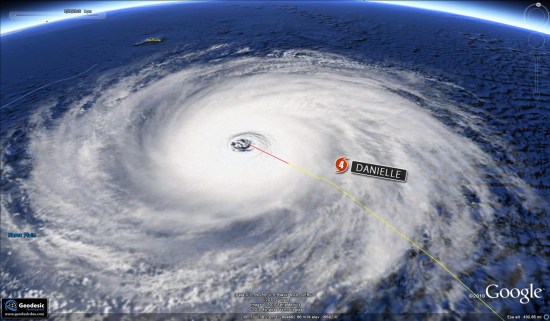Have you ever dreamed of setting sail across the Bermuda Triangle? Well, now you can follow the recent MBARI Sargasso Sea Expedition virtually by reading a series of posts from the cruise in Google Earth. To follow this sea expedition, download the complete log kml or visit the Earth Gallery.
MBARI (Monterey Bay Aquarium Research Institute) researchers and scientists from the University of Hawaii, University of Miami and Stanford University sailed 940 miles (1500 km) from Bermuda to the Bahamas across the North Atlantic Ocean through the Sargasso Sea. Their goal was to better understand this unique ocean habitat which is named for the free-floating brown algae Sargassum (also called “gulf weed”) and its associated community of marine life. Under the direction of Chief Scientist Ken Smith, the expedition team measured biodiversity and the impacts of climate change and carbon cycling to this ecosystem. They also learned more about deep ocean animals.
The mission is the second voyage for the Schmidt Ocean Institute ship, Lone Ranger, whose Facebook page you can follow here, a former ocean tug that has been retrofitted for cutting-edge science investigations.
You can follow the MBARI Expedition Logbook to read a day by day account of the Expedition.
Posted by Jenifer Foulkes, Product Manager, the Ocean in Google Earth & Maps

